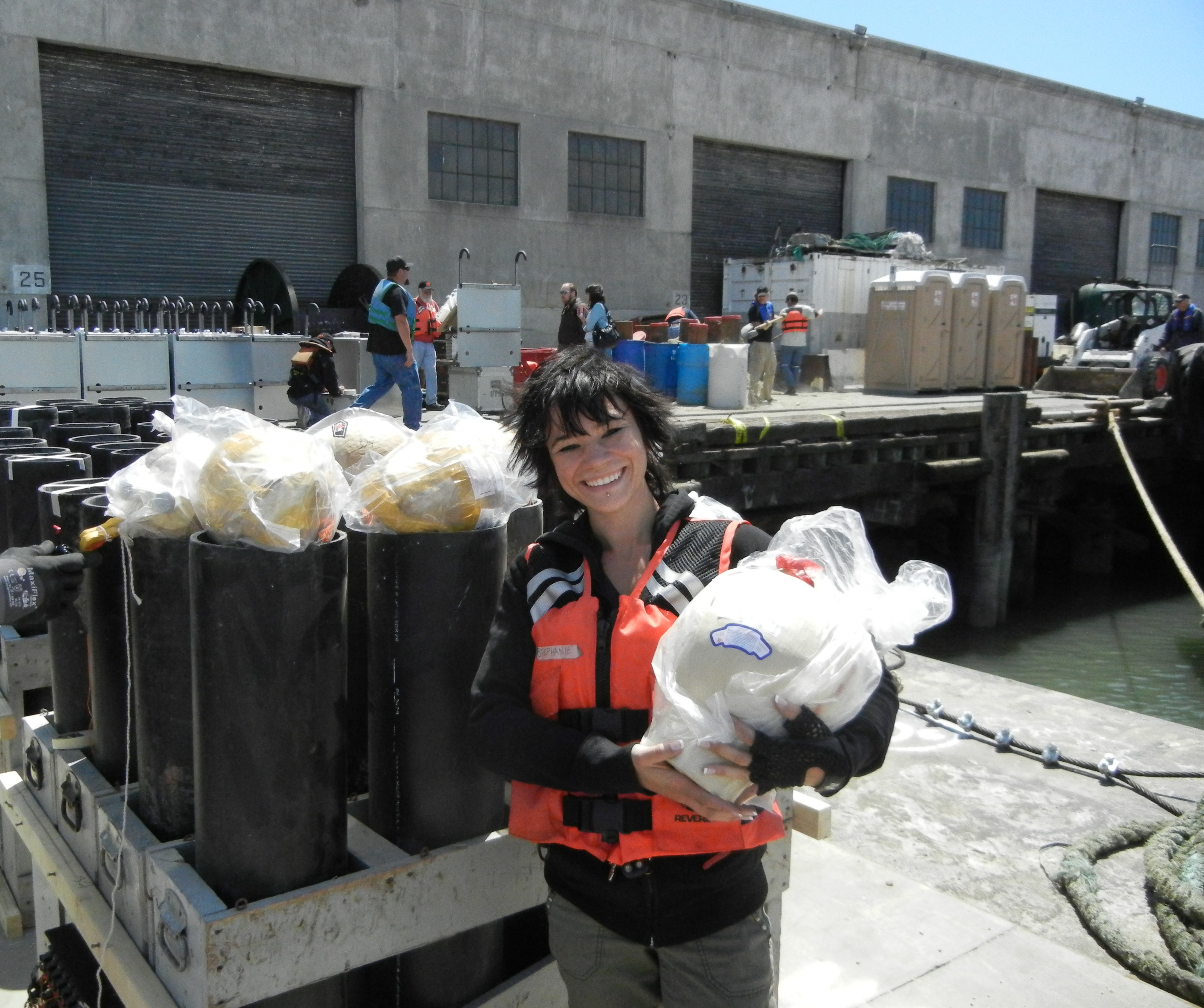Alumna Stephanie Woropay puts together fireworks displays as a pyrotechnic operator

UCLA alumna Stephanie Woropay is a pyrotechnics operator ““ a “pyro” for short. (Courtesy of Stephanie Woropay)
This article is part of the Daily Bruin's Graduation Issue 2012 coverage. To view more multimedia, galleries, and columns, visit http://dailybruin.com/gradissue2012
By Lenika Cruz
June 9, 2012 10:30 p.m.
Correction: The original version of this article contained an error. Before a show, Woropay is responsible for putting together special racks that hold high-density polyethylene tubing.
The temperature hovered just above 50 degrees, and the sky was clear for a San Francisco evening. The Golden Gate Bridge, usually glowing with tiny headlights passing from one end to the other, was completely dark.
Then, at 9:30 p.m., a waterfall of golden light began pouring from the bridge into the water below; minutes later, threads of fire shot up into the night and erupted into glittering halos of red, blue and green.
Stephanie Woropay, who graduated from UCLA as a theater student last December, hung back and watched as her work transfixed shorelines of spectators for the Bridge’s 75th anniversary fireworks show.
Woropay is a pyrotechnics operator ““ a “pyro” for short ““ and moments like these remind her why she chose to work with dangerous explosives for a living.
“Everyone was so mad we were closing the bridge for an hour,” she said.
“But when the show went off, everyone was cheering, and that’s what makes it worth it. For one minute, everybody agrees to do one thing, and it’s to look and feel.”
When Woropay first came to UCLA to study theater lighting and design, she said she was mostly interested in concerts, but gradually her curiosity shifted to pyrotechnics, a field she had heard was notoriously difficult to enter.
“I had people go so far as to tell me that my best chance was to be born into a pyro family in my next life,” Woropay said.
Unsure where to start, Woropay sent out dozens of emails to potential mentors.
She was referred to Eric Elias, a UCLA alumnus and pyrotechnic operator-in-charge for the Hollywood Bowl pyro crew.
Until the mid-’90s, men dominated pyrotechnics, but Elias said he was one of the few pyros who actively recruited women.
Woropay immediately joined his crew and began working on shows for Journey, Disney’s Fantasia and, most recently, Coldplay.
“I know (Stephanie) intended to go into the more traditional theater arts,” Elias said.
“(Pyro) is considerably less traditional, but I think she came to appreciate it for what it is. We work long, hard, hot, sweaty hours, but at the end of the night, 18,000 people stand up and applaud.”
To get her pyro license, Woropay needed to be 21, obtain five letters of recommendation from licensed pyros, pass a series of tests and crew eight shows.
When Woropay turned in her application the day after her 21st birthday, not only had she met all the criteria, but she had also logged 38 shows.
Before a show, Woropay is responsible for putting together special racks that hold high-density polyethylene tubing.
She angles the tubes according to the show’s specifications, loads them with fireworks and wires everything to the main board to ensure continuity between the racks.
Once the show finishes, she and the crew clean up the debris.
John Garofalo, an MFA student in theater lighting who is graduating this spring, said Woropay never relied on a false sense of entitlement that students often have, thinking they can snag a job without working hard.
Woropay first met Garofalo the summer before she started at UCLA, and through him, she landed her first lighting gig in Los Angeles.
They continued to work together on professional and student productions, where Garofalo said he witnessed her tenacity first-hand.
“Almost every single person on the planet underestimates her, but I’ll take her (on my crew) over a 6-foot-tall, super strong, seemingly knowledgeable male electrician any day,” Garofalo said.
Pyro work is physically demanding. Though, at 5 feet 2 inches tall, Woropay might not immediately seem cut out for the job, she said the physicality of theater lighting work prepared her well.
Pyros often face harsh conditions, carrying heavy loads, sometimes working 12-hour days and enduring extreme temperatures.
Once, at a gig in Lancaster, 113-degree dry heat caused Woropay to become dehydrated, forcing her to sit out the rest of the day. On site, pyros need to be alert at all times, which includes paying attention to strange smells ““ like chemicals or smoke ““ that could spell danger.
“I wasn’t used to the heat because I’m a Bay Area girl,” Woropay said. “Once you’re a little bit disoriented, it becomes too dangerous to keep working.”
Woropay said she encountered her share of people who doubted her ability to succeed, but in the end, her family, friends and fellow crew always urged her to keep going. Which isn’t hard, she said, considering pyro is the coolest job she could think of.
“I tell people that I do fireworks, because it’s easier for them to understand. It’s easier for my mom to say that than, “˜My daughter works with things that are designed to explode,'” Woropay said, laughing.
As a running joke, Woropay calls her mother while driving home after a gig late at night to assure her that she still has all 10 fingers.
When it comes to special effects, for Woropay, fire ““ as breathtaking as it can be ““ is but one element she plans to master.
“Someday,” Woropay said, “I’m going to do water.”



